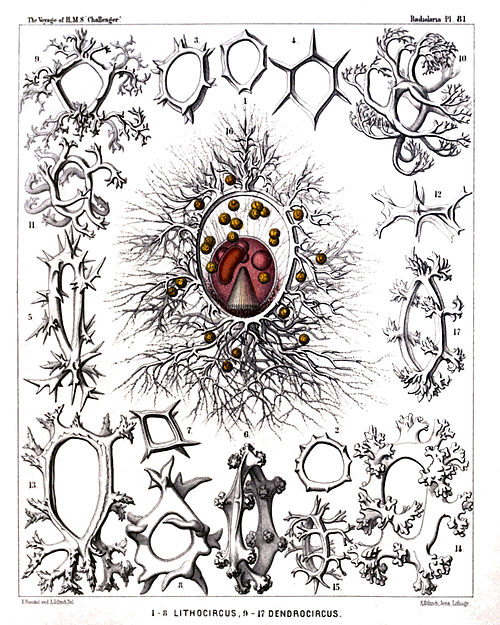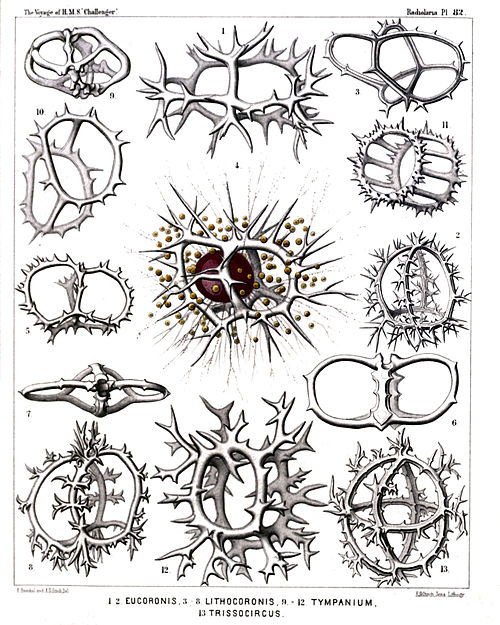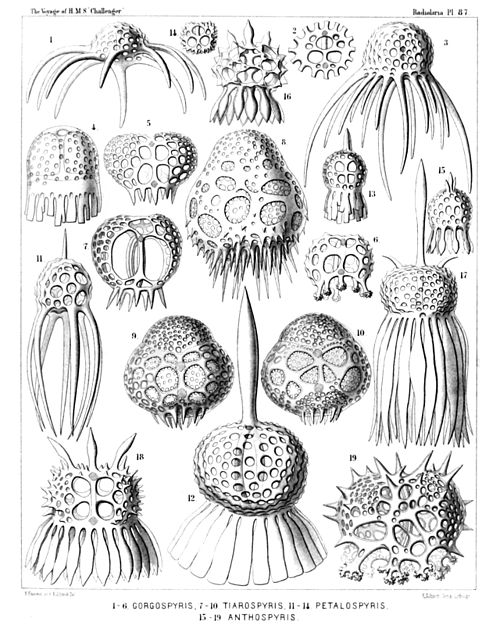Report on the Radiolaria/Plates9
PLATE 81.
Legion NASSELLARIA.
Order STEPHOIDEA.
Family Stephanida.
|
||||||||||||||||||||||||||||||||||||||||||||||||||||||||||||||||||||||||||||||||||
PLATE 82.
Legion NASSELLARIA.
Order STEPHOIDEA.
Families Coronida et Tympanida.
|
||||||||||||||||||||||||||||||||||||||||||||||||||||||||||||||||||||||
PLATE 83.
Legion NASSELLARIA.
Orders STEPHOIDEA et SPYROIDEA.
Families Stephanida, Semantida, Coronida, Tympanida, Zygospyrida, Phormospyrida et Androspyrida.
|
|||||||||||||||||||||||||||||||||||||||||||||||||||||||||||||||||||||||||||||||||||||||||||||||
PLATE 84.
Legion NASSELLARIA.
Order SPYROIDEA.
Family Zygospyrida.
|
||||||||||||||||||||||||||||||||||||||||||||||||||||||||||||||||||||||||||||||||||||||||||||||
PLATE 85.
Legion NASSELLARIA.
Order SPYROIDEA.
Family Zygospyrida.
|
|||||||||||||||||||||||||||||||||||||||||||||||||||||||||
PLATE 86.
Legion NASSELLARIA.
Order SPYROIDEA.
Family Zygospyrida.
|
|||||||||||||||||||||||||||||||||||||||||||||||||||||||||||||||||
PLATE 87.
Legion NASSELLARIA.
Order SPYROIDEA.
Families Zygospyrida et Tholospyrida.
|
|||||||||||||||||||||||||||||||||||||||||||||||||||||||||||||||||||||||||||||||||||||||||||||
PLATE 88.
Legion NASSELLARIA.
Orders STEPHOIDEA et SPYROIDEA.
Families Tympanida et Androspyrida.
|
|||||||||||||||||||||||||||||||||||||||||||||||||||||||||||||||||
PLATE 89.
Legion NASSELLARIA.
Order SPYROIDEA.
Families Zygospyrida, Tholospyrida et Androspyrida.
|
|||||||||||||||||||||||||||||||||||||||||||||||||||||||||||||||||||||||||||||||||||
PLATE 90.
Legion NASSELLARIA.
Order SPYROIDEA.
Family Androspyrida.
|
|||||||||||||||||||||||||||||||||||||||||||||||||||||||||||||||










